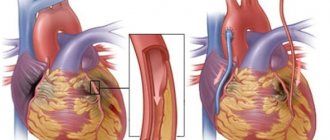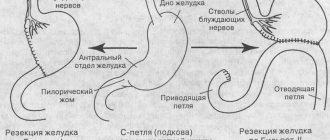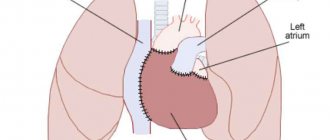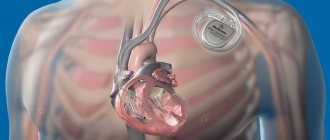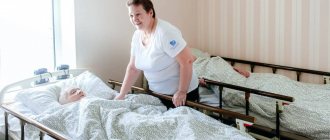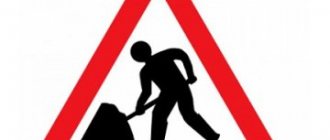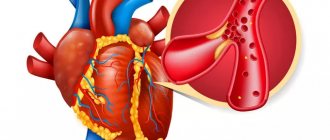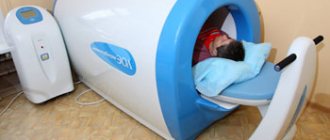Indications
CABG is an operation that is primarily required for patients with severe angina that is resistant to drug therapy. In addition, surgical treatment may be recommended in the absence of symptoms. There is silent myocardial ischemia, which is no less dangerous. It is not felt by the patient, but can be diagnosed using ECG and Holter monitoring.
Indications for CABG can also be determined using coronary angiography. This is an x-ray test in which contrast is injected into the arteries of the heart. The main cause of mortality from coronary disease is atherosclerosis and disruption of the integrity of the atherosclerotic plaque. The blood vessel is torn, and a blood clot forms at the site of damage. It clogs the coronary artery, resulting in myocardial infarction.
Coronary angiography allows you to identify large obstacles to blood flow (atherosclerotic plaques) and assess the risk of acute cardiovascular events. A high degree of coronary artery disease requires cardiac CABG.
Based on the results of coronary angiography, the main indications for CABG are:
- Narrowing of the lumen of any coronary artery by 75% or more
- Reduction in the lumen of the left coronary artery trunk by 50% or more
The location of stenosis (impaired patency) of the coronary arteries is also assessed. The more proximal it is (closer to the heart), the worse the blood supply to the myocardium. CABG surgery on the heart will be most successful if normal blood circulation is observed beyond the narrowing.
Find a specialized clinic
Contraindications
Coronary artery bypass grafting (CABG) may not be performed on patients even if there are indications for surgery. This may be due to the presence of contraindications. These are diseases and conditions of the body that make surgery too dangerous or unsuccessful.
Main contraindications for cardiac CABG:
- Reduced left ventricular ejection fraction by up to 30%
- Congestive heart failure
- Impaired blood flow in all coronary arteries
- Severe concomitant diseases
In case of circulatory disorders in all coronary arteries, preference is given to laser myocardial revascularization or cell therapy.
Rules for rehabilitation nutrition
Rehabilitation after coronary artery bypass surgery involves revising your diet.
A factor that contributes to poor circulation is excess cholesterol in the blood. Looking at this, it is necessary to exclude fats from the diet. Include in your diet those foods that help remove them from the body.
The following products are prohibited:
- duck, pork, lamb and offal;
- sausages and canned food;
- store-bought semi-finished products and minced meat;
- fatty cheeses, sour cream, cream, milk;
- butter, margarine, mayonnaise, ketchup;
- various confectionery and baked goods.
Your daily diet should include a large amount of vegetables, herbs, fruits, fish and seafood, boiled chicken and beef. Low-fat dairy and fermented milk products. The source of fat can be sunflower oil in the amount of 2 tablespoons per day.
Attention ! The main condition of nutrition is fragmentation. Food must be taken at least 5 times a day. Portions should be small. If you are overweight, you need to reduce the calorie content of your meals.
It is necessary to salt dishes after they are cooked. The daily salt intake is 4 grams . You can replenish the body's water balance by drinking one liter of drinking water.
The following drinks are not recommended: strong tea, energy drinks and soda.
How is the operation performed?
The operation can be performed using a heart-lung machine. In addition, in developed countries, including Germany, off-pump CABG is increasingly being used.
The essence of surgery is to create a bypass path for blood flow. For this purpose, shunts are created - additional vessels that leave the aorta and flow into the coronary arteries - beyond the level of narrowing. A person’s own veins or arteries are used as prostheses. This may be the great saphenous vein or the radial artery.
Usually 3 bypasses are created - for the largest coronary arteries:
- Anterior interventricular
- Envelope
- Right
In 20% of patients, 4-8 anastomoses are installed. More preferable is CABG (coronary artery bypass grafting) on a beating heart.
The advantages are as follows:
- Blood cells are not damaged
- Rehabilitation after CABG is faster
- The operation has a shorter duration
In this case, complications after CABG on the heart are less common. Because there is no risk from those that are directly related to the use of a heart-lung machine. This is pulmonary edema, embolic damage to the blood vessels of the brain or kidneys, hypoxia (oxygen starvation) of internal organs.
Authorized Products
To reduce cholesterol levels and minimize the risk of developing atherosclerosis and angina, it is necessary to include foods containing polyunsaturated fatty acids, complex carbohydrates and fiber in the diet. The menu should include soups made with vegetable broth with the addition of cereals (beetroot soup, cabbage soup, borscht) and potatoes. For second courses, it is recommended to use lean varieties of red meat (veal, lean beef) and poultry (turkey, chicken), and rabbit. Low-fat varieties of white fish (cod, hake, tuna, flounder) and seafood (mussels, squid, shrimp, seaweed) are extremely healthy. As for fats, the use of vegetable oils (sunflower, olive), preferably cold-pressed, is recommended.
The diet should include dairy products (low-fat kefir, fermented baked milk) and low-fat cheeses. Be sure to include baked goods made from wholemeal flour, yeast-free bread, whole grains, oatmeal cookies and porridge in your diet. You should increase the amount of fruits and vegetables consumed in any form and method of culinary processing. The diet should include freshly squeezed juices from berries (blackberries, strawberries, blueberries) and fruits, almonds, walnuts. Fresh garden herbs and cereal dishes are a must. It is useful to use decoctions of rose hips and wheat bran to improve blood circulation.
Table of permitted products
| Proteins, g | Fats, g | Carbohydrates, g | Calories, kcal | |
Vegetables and greens | ||||
| eggplant | 1,2 | 0,1 | 4,5 | 24 |
| beans | 6,0 | 0,1 | 8,5 | 57 |
| zucchini | 0,6 | 0,3 | 4,6 | 24 |
| cabbage | 1,8 | 0,1 | 4,7 | 27 |
| broccoli | 3,0 | 0,4 | 5,2 | 28 |
| Brussels sprouts | 4,8 | 0,0 | 8,0 | 43 |
| cauliflower | 2,5 | 0,3 | 5,4 | 30 |
| green onion | 1,3 | 0,0 | 4,6 | 19 |
| bulb onions | 1,4 | 0,0 | 10,4 | 41 |
| cucumbers | 0,8 | 0,1 | 2,8 | 15 |
| squash | 0,6 | 0,1 | 4,3 | 19 |
| salad pepper | 1,3 | 0,0 | 5,3 | 27 |
| parsley | 3,7 | 0,4 | 7,6 | 47 |
| salad | 1,2 | 0,3 | 1,3 | 12 |
| beet | 1,5 | 0,1 | 8,8 | 40 |
| celery | 0,9 | 0,1 | 2,1 | 12 |
| soybeans | 34,9 | 17,3 | 17,3 | 381 |
| asparagus | 1,9 | 0,1 | 3,1 | 20 |
| tomatoes | 0,6 | 0,2 | 4,2 | 20 |
| Jerusalem artichoke | 2,1 | 0,1 | 12,8 | 61 |
| pumpkin | 1,3 | 0,3 | 7,7 | 28 |
| dill | 2,5 | 0,5 | 6,3 | 38 |
| beans | 7,8 | 0,5 | 21,5 | 123 |
| garlic | 6,5 | 0,5 | 29,9 | 143 |
| lentils | 24,0 | 1,5 | 42,7 | 284 |
Fruits | ||||
| avocado | 2,0 | 20,0 | 7,4 | 208 |
| oranges | 0,9 | 0,2 | 8,1 | 36 |
| grapefruit | 0,7 | 0,2 | 6,5 | 29 |
| pears | 0,4 | 0,3 | 10,9 | 42 |
| lemons | 0,9 | 0,1 | 3,0 | 16 |
| mango | 0,5 | 0,3 | 11,5 | 67 |
| tangerines | 0,8 | 0,2 | 7,5 | 33 |
| nectarine | 0,9 | 0,2 | 11,8 | 48 |
| peaches | 0,9 | 0,1 | 11,3 | 46 |
| apples | 0,4 | 0,4 | 9,8 | 47 |
Berries | ||||
| gooseberry | 0,7 | 0,2 | 12,0 | 43 |
| Red currants | 0,6 | 0,2 | 7,7 | 43 |
| black currant | 1,0 | 0,4 | 7,3 | 44 |
Nuts and dried fruits | ||||
| nuts | 15,0 | 40,0 | 20,0 | 500 |
| flax seeds | 18,3 | 42,2 | 28,9 | 534 |
| fenugreek seeds | 23,0 | 6,4 | 58,3 | 323 |
| sunflower seeds | 20,7 | 52,9 | 3,4 | 578 |
Cereals and porridges | ||||
| buckwheat (kernel) | 12,6 | 3,3 | 62,1 | 313 |
| oat groats | 12,3 | 6,1 | 59,5 | 342 |
| cereals | 11,9 | 7,2 | 69,3 | 366 |
| wheat bran | 15,1 | 3,8 | 53,6 | 296 |
Dairy | ||||
| kefir 0% | 3,0 | 0,1 | 3,8 | 30 |
| kefir 1% | 2,8 | 1,0 | 4,0 | 40 |
Cheeses and cottage cheese | ||||
| cottage cheese 0.6% (low fat) | 18,0 | 0,6 | 1,8 | 88 |
| curd tofu | 8,1 | 4,2 | 0,6 | 73 |
Meat products | ||||
| beef | 18,9 | 19,4 | 0,0 | 187 |
Bird | ||||
| chicken fillet | 23,1 | 1,2 | 0,0 | 110 |
| turkey | 19,2 | 0,7 | 0,0 | 84 |
Eggs | ||||
| eggs | 12,7 | 10,9 | 0,7 | 157 |
Fish and seafood | ||||
| fish | 18,5 | 4,9 | 0,0 | 136 |
| seaweed | 0,8 | 5,1 | 0,0 | 49 |
Oils and fats | ||||
| grape seed oil | 0,0 | 99,9 | 0,0 | 899 |
| linseed oil | 0,0 | 99,8 | 0,0 | 898 |
| olive oil | 0,0 | 99,8 | 0,0 | 898 |
| sunflower oil | 0,0 | 99,9 | 0,0 | 899 |
Non-alcoholic drinks | ||||
| mineral water | 0,0 | 0,0 | 0,0 | — |
| green tea | 0,0 | 0,0 | 0,0 | — |
Juices and compotes | ||||
| cranberry jelly | 0,0 | 0,0 | 13,0 | 53 |
| rose hip juice | 0,1 | 0,0 | 17,6 | 70 |
| * data is per 100 g of product | ||||
Recovery after coronary artery bypass surgery
Immediately after surgery, the patient is on artificial ventilation for a certain time. And after natural breathing is restored, prevention of congestion is required. To do this, the patient is asked to inflate rubber balls several dozen times a day. As a result, the lungs expand.
Recovery from open-heart CABG involves caring for the surgical wound. The incision is made down the middle of the sternum. In addition, there is damage to the lower extremities - where the doctor took the material for bypass (the great saphenous vein). Skin wounds heal in 1-2 weeks. After this, the person is allowed to wash in the shower.
Banding after CABG is not mandatory, but is preferred to reduce the risk of sternal suture dehiscence. While skin heals in an average of 10 days, bone heals over several months. Patients often ask how long to wear a bandage after CABG. It is usually used for 4-6 months.
There should be no arrhythmia after CABG. If it occurs, it is not a consequence of the operation. There are a large number of arrhythmias. Some may be caused by myocardial ischemia, others by independent pathologies, and still others by previous myocardial infarction. Typically, the heart rhythm normalizes after surgery due to improved blood supply to the heart muscle.
The consequences of CABG surgery are assessed 2-3 months after it is performed. By this time, angina should no longer bother the patient. The person is given a stress test and IVF is removed to understand how much the blood supply to the myocardium has improved. If there is no pain after CABG during physical activity, the operation is considered successful.
Recovery after CABG can be carried out in a clinic, in a sanatorium or at home. Naturally, the most successful rehabilitation will be under the guidance of a specialist. But some patients undergo rehabilitation after CABG at home, which is usually associated with a desire to save money. If there is no money for quality restoration, you need to take care of yourself. Exercise after CABG surgery is very important. You need to start with walking - at least 1 kilometer a day. Then - gradually increase the load.
Patients often ask when they can sleep on their side after CABG. You can lie on your side almost immediately, if that’s comfortable for you. Most doctors do not prohibit this from happening to their patients, since sleeping on the side does not affect the results of the operation.
Find a specialized clinic
Prescription of exercise therapy and dosage of physical activity
Rehabilitation after cardiac bypass surgery should include physical activity. Many people think that after surgery they need to take care of themselves and move as little as possible. But that's not true.
The main condition is physical activity, which should tend to increase. This is the only way to fully return to your normal lifestyle.
A cardiologist and exercise therapy specialist will help you plan your load correctly. Some work out on their own, selecting the required load, guided by personal intuition. This can lead to a number of complications.
If possible, you should visit the sanatorium. Experienced specialists will be able to select an individual training program, as well as monitor the patient’s condition. Physical activity is distributed in such a way that the patient expands his abilities safely and in a short period of time.
Types of loads:
- use of cardio equipment;
- walking for a certain period of time;
- going up and down stairs;
- a ride on the bicycle;
- swimming.
When practicing independently, the patient must clearly monitor pulse and blood pressure. The exercise therapy complex should become a way of life for people who have undergone surgery.
Physical activity has a positive effect on a person’s psychological state, because patients often become depressed. It is prohibited to use strength training, for example, basketball, football, boxing.
After completion of the recovery period, the patient is in better physical shape than before the operation. He can run, climb stairs, swim, skate and so on.
Life after CABG on the heart
After CABG, a person’s life changes only for the better. Full recovery takes about 6 months. During this time, the sternum grows together and tolerance to physical activity increases. Disability after CABG is not issued. Moreover, disability after CABG can be removed if you become able-bodied again. And if the operation is successful and there is no concomitant pathology, this will happen.
Several important questions that patients often ask regarding lifestyle after surgery:
- Showering - allowed 10 days after surgery (plus or minus 2 days) if the skin wound has healed
- A bath after cardiac CABG is allowed after 2-3 months, when you undergo a follow-up examination (because temperature changes can provoke spasm of the coronary arteries and an attack of angina)
- Alcohol after CABG is allowed in moderation after the early postoperative recovery period
- Smoking is prohibited because it leads to narrowing of the coronary vessels and increases the risk of atherosclerotic damage.
- Gymnastics after CABG - carried out under the guidance of a specialist in physical therapy, required to strengthen the heart muscle and improve tolerance to physical activity
- Diet after coronary artery bypass grafting is desirable, but not mandatory (you can reduce the consumption of animal fats to reduce the risk of atherosclerotic plaques in places where they do not yet exist)
Having surgery does not guarantee that you will not have angina or myocardial infarction in the future. Because CABG only allows you to bypass narrowed areas of blood vessels. But after a few years, new atherosclerotic plaques may appear. Therefore, it is important to adhere to a healthy lifestyle and take medications prescribed by your doctor.
Terms of rehabilitation after bypass surgery
Rehabilitation after cardiac bypass surgery is necessary for a full return to a full life. It allows you to preserve the functioning of the new shunt and prevent it from overlapping.
Rehabilitation after coronary artery bypass surgery allows you to:
- prevent the development of complications and fully restore the functioning of the organ;
- help the myocardium get used to the new circulatory system;
- consolidate the result of the operation;
- prevent the progression of atherosclerosis;
- adapt to psychological and physical stress;
- develop new skills in everyday life;
Goals are considered achieved when a person has fully returned to his usual lifestyle.
How long does rehabilitation take after cardiac bypass surgery?
Complete healing occurs within three months. After a month and a half, the patient can return to normal work activities. If the work is sedentary, then the period is reduced.
Rehabilitation after heart bypass surgery lasts three months. The given time frames are approximate, it all depends on the characteristics of the patient’s body. During this period, it is necessary to pay attention to special recovery procedures.
Where is the best place to do CABG?
Coronary artery bypass surgery is performed all over the world. Many residents of the CIS undergo CABG in Moscow. Often, residents of developing countries seek to travel abroad for surgery. Because it is very dangerous and requires a long recovery. A better-quality operation provides better treatment results and a less painful rehabilitation period.
Residents of many countries go to the States for CABG surgery. The medicine there is really high quality, but very expensive. It is cheaper to do CABG in Israel. We recommend Germany. This is the “golden mean” - German clinics are able to provide the same high quality of medical services as the United States, but it is easier to come here for treatment, and the services of doctors are cheaper.
The main advantages of coronary artery bypass surgery in Germany:
- Surgery is performed on a beating heart if possible given the clinical situation
- The best doctors work in Germany - they come here from all over the world to practice medicine. And when performing CABG, the qualifications of the cardiac surgeon play a significant role
- German clinics are equipped with the latest technology
- After the operation, the person is provided with high-quality care and medicinal support, which improves the tolerability of the early postoperative period
- The opportunity to undergo high-quality rehabilitation, which will return a person to his former lifestyle and restore his ability to work
Safe and effective aortic surgery can be performed at the Helios Klinik Krefeld, a medical center of maximum care, continuously collaborating with leading universities and research centers around the world. The Department of Adult and Pediatric Cardiac Surgery, under the direction of Prof. Dr. med. Jürgen Ennker, has a number of its own developments in the field of surgical interventions on the thoracic and abdominal aorta. These are coronary artery bypass grafting using minimal extracorporeal circulation (a special heart-lung machine is used), coronary artery bypass grafting on a beating heart, and minimally invasive direct coronary artery bypass grafting. The department also uses hybrid endoprostheses of the thoracic and abdominal aorta, and performs classical reconstructive interventions with the installation of self-expanding stents. At the same time, the department’s specialists perform both primary and more complex revision interventions on patients of all ages.
Treatment in Germany can be organized for you by ]Booking Health[/anchor]. We have been working in the medical tourism market for a long time, so we can choose the best clinic for you. You will be treated by the most reputable German specialists.
Thanks to our help, you can save up to 70% of the total costs of treatment and its organization. We have direct contracts with all major clinics in Germany. For treatment you do not have to take out insurance for foreign patients. You will receive Booking Health insurance, which will cover all unexpected medical expenses during the treatment period and for 4 years after it.
Contact Booking Health
